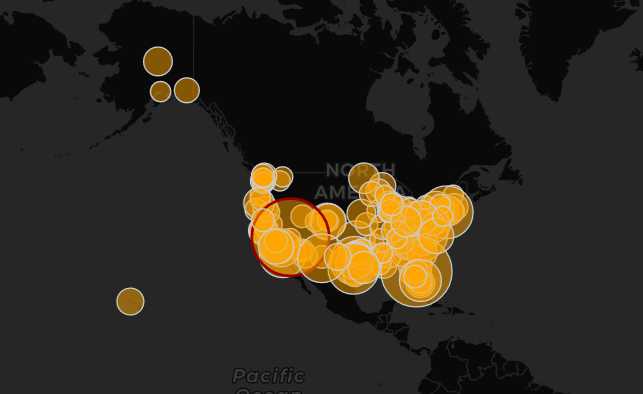 Washington, DC — Alaska ranked first in the nation in the rate of women murdered by men, with a rate of 2.57 per 100,000, according to the new Violence Policy Center (VPC) report When Men Murder Women: An Analysis of 2012 Homicide Data.
Washington, DC — Alaska ranked first in the nation in the rate of women murdered by men, with a rate of 2.57 per 100,000, according to the new Violence Policy Center (VPC) report When Men Murder Women: An Analysis of 2012 Homicide Data.
This year’s report applies to 2012, the most recent year for which data is available. The study covers homicides involving one female murder victim and one male offender, and uses data from the Federal Bureau of Investigation’s Supplementary Homicide Report.
The annual report is being released during the week marking the 20th anniversary of the Violence Against Women Act (VAWA), which was signed into law on September 13, 1994. The study also comes in advance of Domestic Violence Awareness Month in October.
“Since the passage of the Violence Against Women Act 20 years ago, the federal government and many states and communities have taken heroic steps to reduce domestic violence,” states VPC Legislative Director Kristen Rand. “Yet today, far more remains to be done to stop the epidemic of violence against women. The rate of women murdered by men in the United States is tragic and unacceptable.”
“We’re proud of the six states that have recently passed important bipartisan bills to help keep guns out of the hands of domestic abusers, but we need to do more in the states and on Capitol Hill to address this ongoing tragedy,” says Sue Hornik, executive director of States United to Prevent Gun Violence. “The 20th anniversary of the Violence Against Women Act is a fitting time to call for action.”
The Violence Policy Center has published When Men Murder Women annually for 17 years. During that period, nationwide the rate of women murdered by men in single victim/single offender incidents has dropped 26 percent — from 1.57 per 100,000 in 1996 to 1.16 per 100,000 in 2012.
However, the rate of women killed by men in the United States remains unacceptably high. A 2002 study from the Harvard School of Public Health found that the United States accounted for 84 percentof all female firearm homicides among 25 high-income countries, while representing only 32 percent of the female population.
Below is the complete list of the 10 states with the highest rate of females murdered by males in single victim/single offender incidents in 2012:
Rank State Homicide Rate, Females Murdered by Males
1 Alaska 2.57 per 100,000
2 South Carolina 2.06 per 100,000
3 Oklahoma 2.03 per 100,000
4 Louisiana 1.92 per 100,000
5 Mississippi 1.89 per 100,000
6 Nevada 1.83 per 100,000
7 Missouri 1.73 per 100,000
8 Arizona 1.70 per 100,000
9 Georgia 1.66 per 100,000
10 Tennessee 1.60 per 100,000
Nationwide, 1,706 females were murdered by males in single victim/single offender incidents in 2012, at a rate of 1.16 per 100,000.
For homicides in which the victim to offender relationship could be identified, 93 percent of female victims nationwide were murdered by a male they knew. Of the victims who knew their offenders, 62 percent were wives, common-law wives, ex-wives, or girlfriends of the offenders.
Firearms — especially handguns — were the weapons most commonly used by males to murder females in 2012. Nationwide, for homicides in which the weapon used could be identified, 52 percent of female victims were shot and killed with a gun. Of the homicides committed with guns, 69 percent were killed with handguns.
The overwhelming majority of these homicides were not related to any other felony crime, such as rape or robbery. Nationwide, for homicides in which the circumstances could be identified, 85 percent of the homicides were not related to the commission of another felony. Most often, females were killed by males in the course of an argument between the victim and the offender.
The study calculates the rate of women murdered by men by dividing the total number of females murdered by males in single victim/single offender incidents by the total female population and multiplying the result by 100,000. This is the standard and accepted method of comparing fatal levels of gun violence.
To view the full report, please visit https://www.vpc.org/studies/wmmw2014.pdf.







